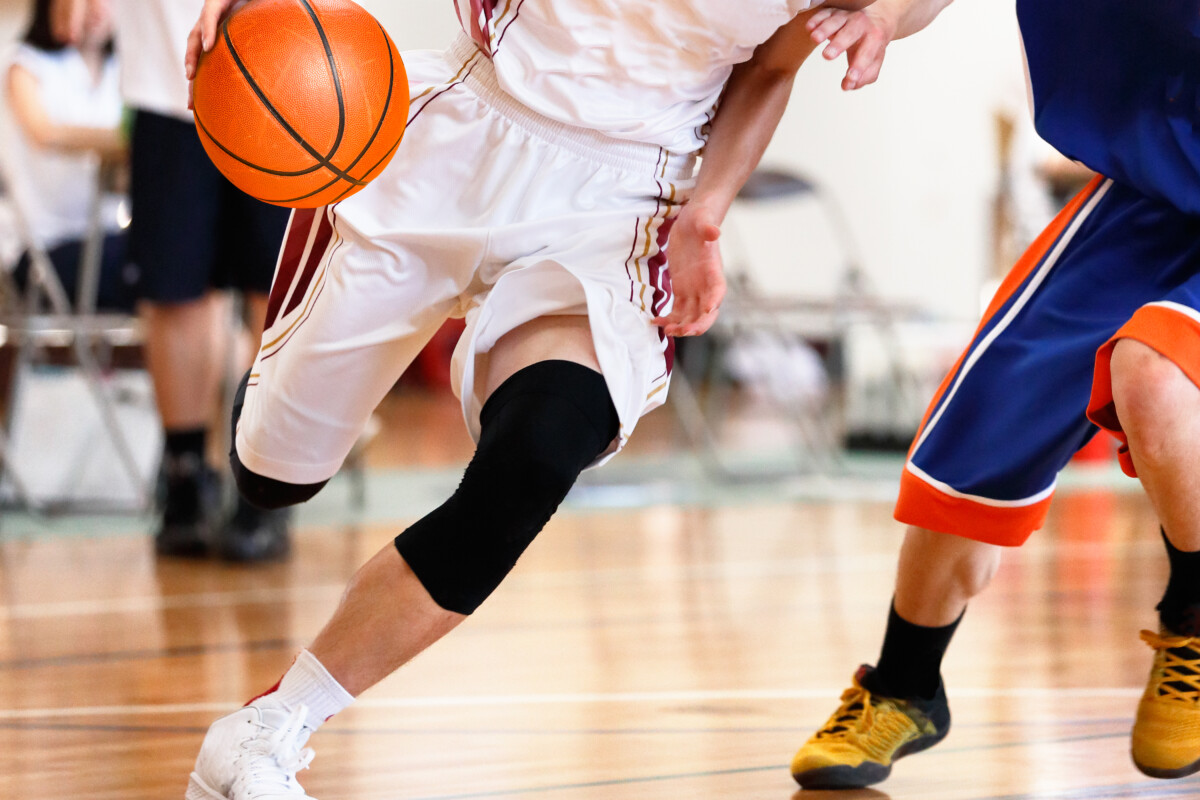Ankle Sprains on the Court

One of the most common basketball injuries seen by Food and Ankle Specialists is an ankle sprain. It’s important for coaches, parents and players to understand the symptoms, treatment and prevention of this type of injury.
What is an Ankle Sprain?
An ankle sprain is an injury to the ankle ligaments, strong bands of connective tissue that attach the bones of the foot to the bottom ends of the lower leg bones. These ligaments help keep the ankle stable.
A sprain occurs when the ankle is twisted or rolled over too far. The ligaments at the side of the feet are the ones at highest risk of injury.
Players sprain their ankles when they are “cutting” or rapidly changing direction during a game. Sprains can also occur when players land or fall in a twisted position or when another player steps on their foot.
Symptoms
Symptoms of an ankle sprain include:
- Pain
- Swelling
- Bruising
- Instability of the ankle joint
- Difficulty walking
A sprain can be mild or severe depending on how far the ligaments were stretched and how strong and flexible they were to begin with. Most sprains are mild, and only involve microtears in the fibers of the ligaments. Other sprains are more serious, involving partial tearing of the actual ligament. If one or more ligaments are completely torn, a severe sprain can result.
Healing and Treatment
When an ankle sprain occurs, it’s important to get off the court right away. Continuing to play on a sprained ankle increases the risk of further damage and the prospect of a longer recovery.
A mild sprain can often be treated at home with rest, ice and compression with an ace bandage. For the first 48 hours, it helps to elevate the ankle above the level of your heart in order to reduce swelling. Over-the-counter medications such as ibuprofen can also help with pain and swelling.
If pain and swelling are severe, or if pain persists for more than 3 to 5 days, the injury should be treated by a Foot and Ankle Specialist. In some cases an x-ray, ultrasound or MRI may be needed to determine the extent of damage.
Very few ankle sprains require surgery, but a severe sprain may need to be immobilized with a special plastic boot or even a cast. Rehabilitation therapy can be an important part of regaining full function.
Mild sprains can heal is as little as a couple of weeks while more serious sprains can take months to heal.
Injured players are often in a hurry to return to the court but it’s important to give a sprained ankle time to heal. If a sprain doesn’t fully heal, the ankle can become unstable over time. This makes the it vulnerable to re-injury. Chronic ankle sprains can cause permanent damage to the joint, resulting in chronic pain and mobility issues.
Prevention
Prevention of ankle sprains isn’t always possible in the heat of the game. However, there are some steps that help decrease the risk. These include:
- Wearing the right shoes for the court.
- Taping or bracing the ankles
- Training exercises to strengthen the ankles, including hopping, jumping and landing drills
- Balance training (The effect of a balance training program on the risk of ankle sprains in high school athletes – PubMed (nih.gov))
Other Sports
Basketball players don’t have a monopoly on ankle sprains. They happen to tennis, football and soccer players as well as hikers, walkers and runners exercising on uneven surfaces.
